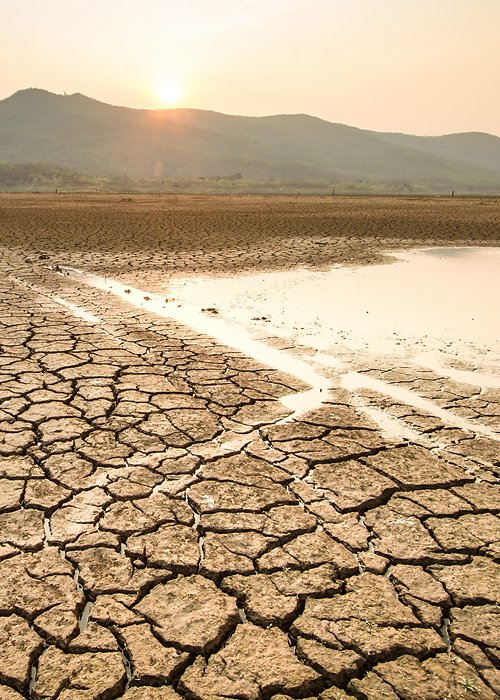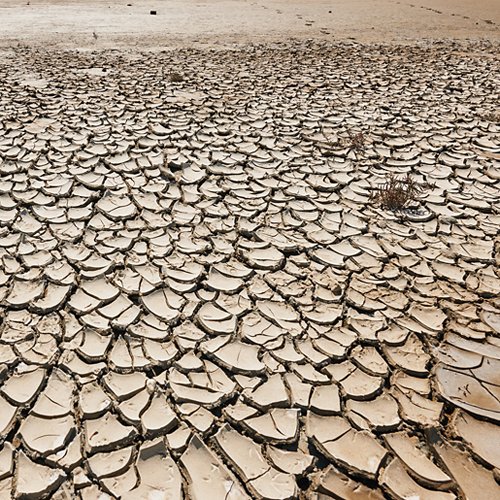Climate change is a fact. And the role of man in determining such change is scientifically established. Normally depicted by images of advancing desertification, hurricanes destroying the coats or melting glaciers, climate change is nowadays mostly dealt with in terms of adaptation and mitigation and, in the long run, reduction of greenhouse gas emissions.
Emission reduction interventions are crucial for ensuring a safe planet for future generations, but the scenarios tell us that between emissions reduction and lowering of temperatures a significant amount of time is likely to pass and, therefore, according to the forecasts, it is unlikely that before 2100 temperatures will begin to fall. So what do we do in the meantime?
Geo-engineering, i.e. the science which involves large-scale interventions on the Earth’s climate system to moderate global warming, was born precisely to answer this question.
Voice search

Geo-engineering: a contribution to mitigate climate change?

Global Warming
Some basic concepts
Let us spell it out because, before proceeding, it is necessary to establish an important concept: geo-engineering is by no means a substitute for emissions reduction initiatives, indeed, the commitment on this front is necessary and needs to be maintained. What geo-engineering could do is to contribute, together with other actions, to mitigating the effects of climate change.
It is also worthwhile clarifying another point: we are in the presence of a branch of science with potential but in its infancy, which requires further exploration, models and assessments in terms of risk, ethics and social and environmental impacts. The Earth is a complex system, and if it is true that “the flap of a butterfly’s wings of a in Brazil can set off a tornado in Texas” (see also “Butterfly Effect”, Edward Lorenz, 1972), we need to be prudent also with geo-engineering interventions that may eventually prove necessary in this century. Geo-engineering basically works through two methods: management of solar radiation and removal of greenhouse gases from the atmosphere.
Removal of greenhouse gases
The main cause of global warming is greenhouse gases: CO2, but also N2O, CH4 and other gases. Removing these gases from the atmosphere should therefore slow down the speed at which the planet warms up or even stop this heating. But how can this “removal” take place?

Ocean surface
Focusing on carbon dioxide, the most widespread and oldest method is certainly that of reforestation: thanks to chlorophyll photosynthesis, in fact, the CO2 present in the air is fixed in the plant tissues. It seems trivial, but if one thinks that forest ecosystems store in trees twice the carbon in the atmosphere and that approx. 30% of the CO2 emissions resulting from the use of fossil fuels is absorbed by the plants of the planet, the importance of the green lungs of the planet is immediately apparent. Protecting and increasing the world’s forestry heritage, as well as intervening in agriculture, is therefore very important.
However, plants store carbon dioxide for a geologically limited period, i.e. for the life time of the plant itself. When the organisms die and decompose, most of the carbon is returned to the atmosphere. And it is precisely at this point that other interventions can also be put into practice.
For example, biomass can be harvested and buried underground, or charred, for example through strong heating in the absence or scarcity of oxygen. This process, known as pyrolysis, makes the bonds of the carbon atoms much stronger and decomposition by microorganisms more difficult. The result is therefore a longer sequestration of carbon in the transformed vegetable matter.
The true protagonists of CO2 sequestration in the long term – through chemical reactions that have carbon dioxide as their protagonist – are, however, rocks. For example, when silicates (the most common minerals on Earth) react with CO2, the latter is “transformed” through a chemical reaction and “imprisoned” in the carbonate rocks.
CaSiO3 + CO2 → CaCO3 + SiO2
This process, which has the advantage of sequestrating CO2 for very long periods, takes a long time in nature, but scientists are developing methods to speed it up.
Another technique on which researchers are conducting studies is the sequestration of carbon dioxide directly from the air.

Coniferous forest
The atmosphere, geosphere and biosphere also interact with the hydrosphere and in particular with the oceans. More in detail, on the water’s surface the atmospheric CO2 is fixed through photosynthesis by microscopic algae. In this case, scientists are assessing whether, thanks to the use of natural nutrients whose absence in nature can limit the growth of these algae, it is possible to increase the carbon dioxide sequestration rate in a sustainable manner. The oceans – and the entire Earth – are in fact a complex system and a possible choice to consciously alter these balances requires careful assessment in terms of impact. Is everything always foreseeable? How many uncertainties are there?
Solar Radiation Management (SRM) techniques
The other techniques currently known to counter the rise in temperature instead focus on controlling the solar radiation arriving on Earth, and more specifically on reducing the incidence and absorption of the short waves of the radiation.
There are many lines of research in this regard. Some propose to intervene on the albedo – which measures the ability of a surface to reflect solar radiation – for example by painting the roofs of buildings, streets and other paving with a reflective white colour; or choosing, where possible, plant species with the highest albedo; developing large-scale reforestation interventions; covering deserts with veritable reflective blankets. Any hypotheses which, like those mentioned in the previous paragraph, can have a significant impact on the ecosystem, for example by altering atmospheric circulation, and which therefore must be carefully studied both from the technical-scientific as well as ethical and social point of view.
The same responsible approach must also be adopted when intervening on the albedo of the clouds and specifically on their condensing cores (the very thin particles around which the water vapour droplets aggregate). Other apparently even more ambitious studies involve the introduction of aerosols into the stratosphere able to reflect the sun’s rays and send them back into space (as happens, for example, with the sulphurous aerosols released during volcanic eruptions), or even placing a system of mirrors near the Earth’s orbit.
Responsibility, research and innovation
Geo-engineering is only at the beginning. The knowledge available today is still insufficient to have a complete picture of the possible impacts of the technologies that we have listed in the preceding paragraphs. For this reason, when we talk about this new science, we are in a situation of uncertainty and indeterminacy, primarily due to the lack of expertise and information. In other words, we are faced with a situation in which we do not have the necessary elements to make choices and to anticipate the consequences of our actions. Precisely for this reason, when we speak of geo-engineering, we do not speak about risk assessment because this assumes some knowledge of the potential effects of a technology or phenomenon.
But how can we continue to innovate ethically and responsibly in this field? The projects and interventions that are trying to analyse the issue from an ethical point of view and involve society in the debate on these technologies are many. In a certain sense, we can say that geo-engineering, unlike what has happened for other technologies, such as GMOs, has since the outset been characterised by a responsible approach, involving, in addition to researchers, also other social players, and has led to a reflection also at the ethical and political level. A virtuous example in this sense is the British SPICE (Stratospheric Particle Injection for Climate Engineering) project, which helps researchers to reflect on the possible impacts of their research and suggests a reflection on topics such as innovation governance and public participation in decision-making processes related to geo-engineering.
By Anna Pellizzone
To find out more
Read also...


